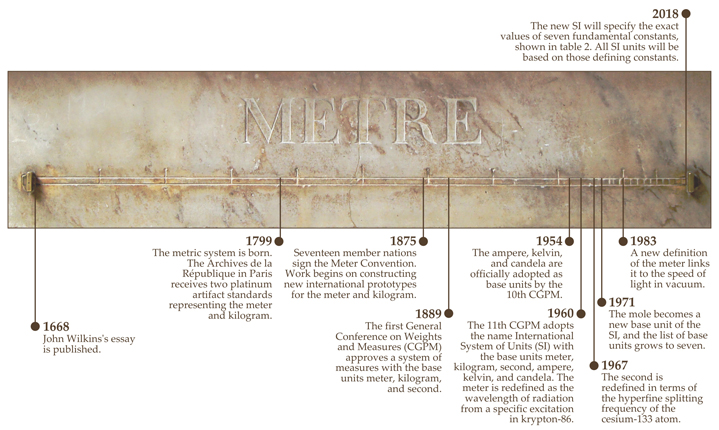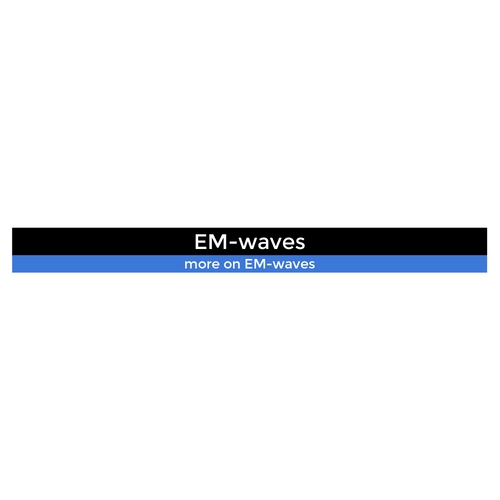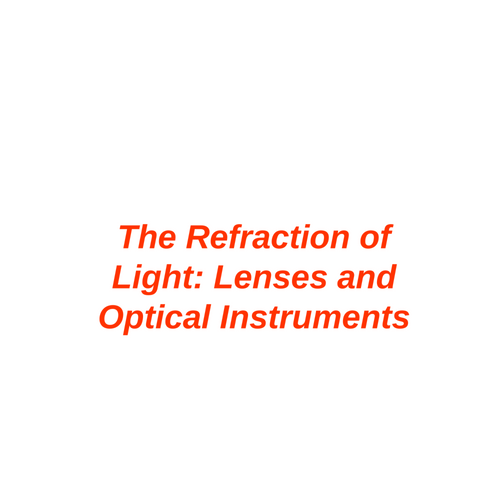What is Physics?
The story of
quantitative reasoning
about the natural world.
What is Physics?
Overview
Contents
Herein, you will find resources related to the following topics:
What is Physics?
The Story
What is Physics?
Textbook reading -- Chapter 1
What is Physics?
Textbook reading -- Chapter 1

<1> what is physics?
<2> I am pursuing a __________ major -- how is physics relevant to my major in general?
<3> I am about to start my first physics course (general physics with calculus, part I) -- what skills should I focus on to help me in my field of study (______)?
<4> here's a link to a section in a textbook: https://openstax.org/books/university-physics-volume-1/pages/1-1-the-scope-and-scale-of-physics -- summarize the authors' thoughts on the scope and scale of physics.

What is Physics?
The scope of physics
What are the characters in the story of physics?
The world of physics

Physical quantities
Relationships
What is Physics?
The Characters: Physical Quantities
What is Physics?
The scope of physics
Physical Quantities
The world of physics

Physical
Re: nature
Numerical representation
+
Precision
+
Unit
Quantity
Decimal Notation
Scientific Notation
Engineering Notation
What is Physics?
The scale of physics
Powers of Ten
Read the section "The Scale of Physics"
and pay attention to what scientists mean by "orders of magnitude"
What is Physics?
The Characters: Accuracy vs. Precision
What is Physics?
The scope of physics
Physical Quantities -- accuracy vs. precision
✅ Accuracy in Physics
- Refers to how close a measured value is to the true or accepted value.
- It's about correctness.
🎯 Precision in Physics
- Refers to the repeatability or consistency of measurements.
- It's about how finely a measurement is made and how reproducible it is.

In the context of physics, what are the main differences between the terms "accuracy" and "precision"?
What is Physics?
The scope of physics
Physical Quantities -- accuracy vs. precision
Accuracy
Refers to how close a measurement is to the true or accepted value.
Precision
Refers to how consistent repeated measurements are, regardless of how close they are to the "true" value.
| Scenario | Description |
|---|---|
| Accurate & Precise | Arrows are tightly grouped and near the bullseye. |
| Precise but Not Accurate | Arrows are tightly grouped but far from the bullseye. |
| Accurate but Not Precise | Arrows are spread out but average near the bullseye. |
| Neither Accurate nor Precise | Arrows are spread out and far from the bullseye. |
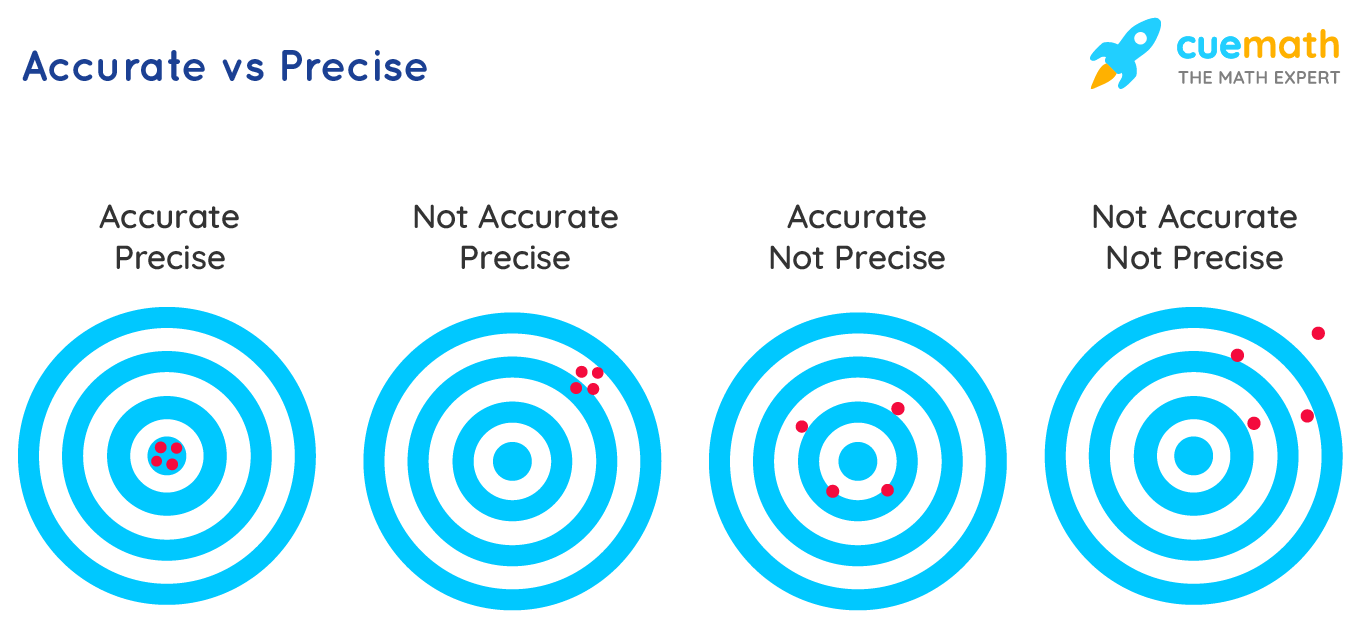
What is Physics?
The scope of physics
Physical Quantities -- accuracy vs. precision
Summary
| Accuracy | Precision | |
|---|---|---|
| Definition | Closeness to the true value | Consistency of repeated measurements |
| Focus | Systematic error | Random error |
| Instrument Role | Calibration affects accuracy | Resolution affects precision |
| Example | A scale reads 1.00 kg for a 1.00 kg mass | A scale gives 1.00 kg every time, even if the mass is 0.95 kg |
🧪 Why It Matters in Physics (Labs)
- Accurate but not precise: The average result is correct, but measurements vary widely.
- Precise but not accurate: The measurements are consistent but systematically wrong.
- Both accurate and precise: Ideal case—correct and consistent results.
What is Physics?
The scope of physics
Physical Quantities -- Significant digits
✅ Significant digits in Physics
- ...
- ...
- ...

In the context of physics, ... ?
What is Physics?
The scope of physics
Physical Quantities -- Significant digits
-
In the context of physics, significant figures (or significant digits) refer to the digits in a measurement that carry meaningful information about its precision. They help communicate how accurate and reliable a measurement is, based on the tools and methods used to obtain it.
🧮 Rules for Identifying Significant Figures
| Non-zero digits | are always significant. | 123 has 3 significant figures. |
|---|---|---|
| Zeros between non-zero digits | are significant | 1002 has 4 significant figures |
| Leading zeros (i.e. before the first non-zero digit) | are not significant | 0.0045 has 2 significant figures |
| Trailing zeros in a number with a decimal point | are significant | 45.00 has 4 significant figures |
| Trailing zeros in a whole number without a decimal point | may or may not be significant | 1500 could have 2, 3, or 4 significant digits --expressing it in scientific notation can reveal e.g. 1.50 x 10^3 or 1.500 \x10^3 |
🔄 Significant Figures in Calculations
- Multiplication/Division: The result should have the same number of significant figures as the input with the fewest.
- Addition/Subtraction: The result should be rounded to the least number of decimal places among the inputs.
What is Physics?
Physical Quantities -- Units
What is Physics?
Units
What is Physics?
SI units


What is Physics?
Timeline of SI pre-2018
What is Physics?
Units
History of the SI system, from inception to 2018.

What is Physics?
SI Units

Pre and post 2018 (most recent change.)
What is Physics?
SI Units -- base units

Current SI base units, and the physical constants that define them.
What is Physics?
SI Units - the meter
How is the meter defined?
What is Physics?
Base and Derived Units


What is Physics?
Base and Derived Units
What is Physics?
Physical Quantities -- Dimensional Analysis
What is Physics?
Base and Derived Units

What is Physics?
Physical Quantities -- Scale
What is Physics?
The scale of physics
Powers of Ten
On June 1st 2020, I watched the live stream of the Crew Dragon Demo-2 launch; the first crewed orbital spaceflight launched from the United States since the final Space Shuttle mission, STS-135, in 2011.
As I saw the numbers climb on the counters in the bottom left corner of the video feed, indicating ever-increasing speeds in units of KM/H and altitude in units of M, I saw yet another example of how technology amplifies human action: in this case allowing us to travel vast distances at great speeds, compared to our own ability to travel unaided by technology.
Launch @4:22:00

What is Physics?
The scale of physics
Powers of Ten
In the midst of a global pandemic caused by a novel coronavirus, some of the conversations surrounding the efficacy of masks involved discussion of particulate matter (PM) sizes -- here's an infographic showing relative sizes of particulates.

What is Physics?
The scale of physics
Powers of Ten
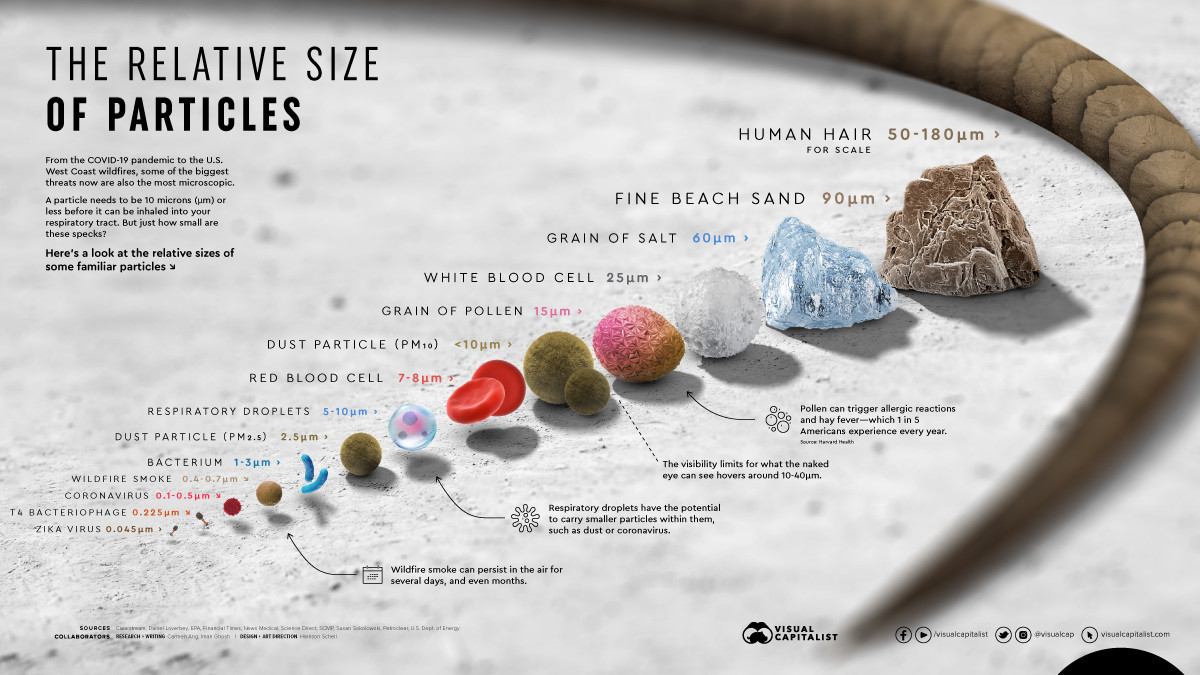
How do we know the sizes of these objects?
This is yet another example of technology amplifying our ability to resolve small things.
To detect objects on the scales depicted in the graphic, for example, we use an optical or an electron microscope, to resolve objects we are otherwise unable to resolve with our unaided vision.
What is Physics?
The scale of physics
Powers of Ten
The scales of lengths and times and mass we are able to resolve are vast, and therefore we require a good system to keep track of these ranges. Watch the following video, and read about prefixes in Section 1.2
What is Physics?
The scale of physics
Powers of Ten - prefixes
✅ Prefixes
|
Power of 10 |
name | symbol | example |
|
-12 |
pico | p | Atomic radius (~0.1 pm) |
| -9 | nano | n | DNA width (~2 nm) |
| -6 | micro | µ | Bacteria (~1 µm) |
| -3 | milli | m | Raindrop (~1 mm) |
| -2 | centi | c | Stamp size (~1 cm) |
| +3 | kilo | k | Car mass (~1,000 kg) |
| +6 | mega | M | City power usage (~1 MJ) |
| +9 | giga | G | Data storage (~1 GB) |
| +12 | tera | T | Global data (~1 TB) |

In the context of physics, what are the most commonly used prefixes? give examples
What is Physics?
Physical Quantities -- Unit Conversion
What is Physics?
Unit Conversion
On the importance of the proper use of units.
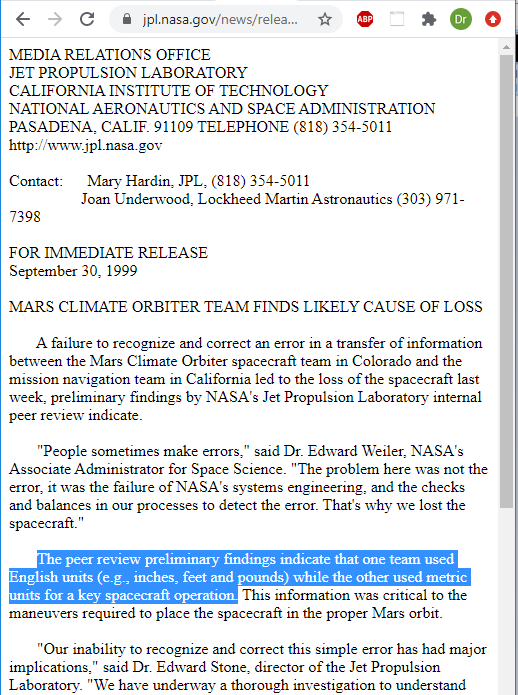
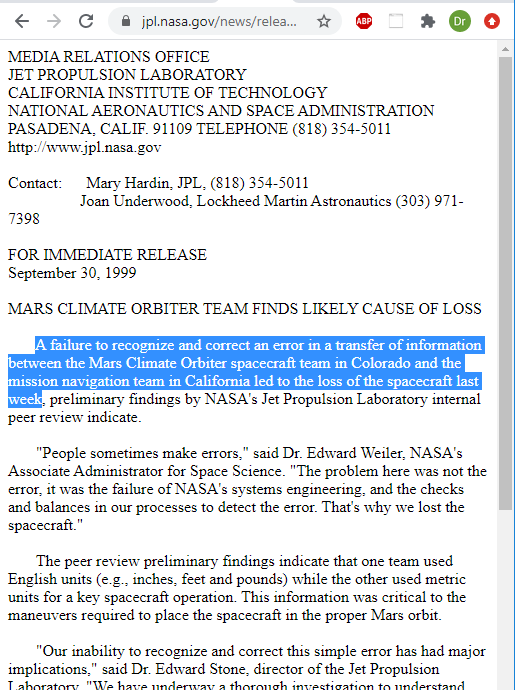
I recall an incident from back in 1999 ...

When NASA lost a spacecraft!




To master the skill of unit conversion, you should check off the following:
proceed through the presentation to be able to check off these skills!
| What are conversion factors, and where to find them. | |
|---|---|
| How to use conversion factors properly to convert from one unit to another. | |
| How to properly do unit conversion of squares and cubes. |
What is Physics?
Unit Conversion
Learning outcomes



What is Physics?
Unit Conversion
Unit Conversion
First, read these few paragraphs about unit conversion from the textbook.
Watch this video for more information on conversion factors, and how to use them in multiple examples.
What is Physics?
Unit Conversion
Conversion factors
What is Physics?
Unit Conversion
Conversion factors
Tables in Appendix C with some common conversion factors. In case you need them.
What is Physics?
Unit Conversion
Unit Combinations
Watch this video to learn how to convert unit-combinations
What is Physics?
Unit Conversion
Area & Volume
Watch this video to learn how to convert area and volume
What is Physics?
Unit Conversion
Other resources: video 1
What is Physics?
Physical Quantities -- Relationships
What is Physics?
The scope of physics
What are the characters in the story of physics?
Physical quantities
Relationships
The world of physics

What is Physics?
The scope of physics
Models
Read the section "Building Models"
and pay attention to what scientists mean by "Law" and "Theory"
Relationships
principles, laws, models, etc...
What is Physics?
The scope of physics
Law vs Theory
What is Physics?
Classical Physics -- Setting the scene
What is Physics?
Basic premise
Absolute time and space

What is Physics?
Physical Quantities -- Scalars & Vectors
What is Physics?
Physical Quantities
Directional information
force
It is also clear to us that some physical quantities are not completely well defined unless their direction is specified
For example, traveling due north is not the same as traveling due south
And a push is not equivalent to a pull
velocity
What is Physics?
Physical Quantities
Directional information
Vector quantities
relative position
velocity
force
Specified by Magnitude & spatial Direction
examples:
Scalar quantities
time interval
speed
temperature
Specified by Magnitude only
examples:
What is Physics?
Physical Quantities
Magnitude and Direction
relative position
time interval
What is Physics?
Basic premise
Subtitle
relative position
relative time
What is Physics?
Unit Conversion
On the importance of the proper use of units.
relative location
What is physics
By drmoussaphysics
What is physics
- 349
